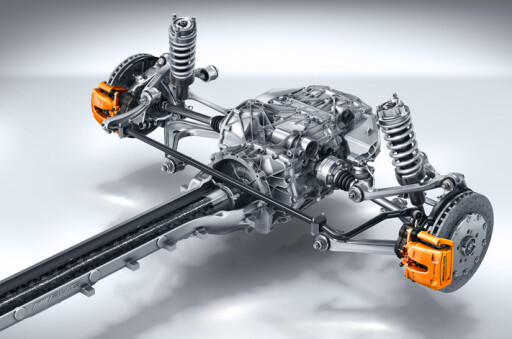
TOUCHING IS SPECIAL. SEEING AND HEARING CAN STIMULATE THE DESIRE TO BECOME ACQUAINTED, BUT ABSOLUTE INTIMACY MEANS HOLDING, STROKING,
OR EVEN caressing. AND I APPRECIATE OPPORTUNITIES TO DO ALL THESE THINGS… TO CARS. OBVIOUSLY. WHERE DID YOU THINK THIS WAS HEADING?
First published in the March 2017 issue of Wheels magazine, Australia’s most experienced and most trusted car magazine since 1953
The ride was stripped well and truly bare at the launch of the Mercedes-AMG GT R. This is, to my mind, the most persuasive version of the German two-seater.
I’d got into the habit of calling the GT, with intentional disrespect, a Kraut Corvette. They do, after all, have much in common; both are rear-drive, with a stonking V8 up front, a transaxle down the back and a torque tube joining the two.
Exclusive: One-on-one with the scorching new AMG GT R
But the fierceness and finesse of the GT R was enough to make me seriously consider being more polite in future...
While the thrill of thundering laps of Portimao was still fresh, it was upstairs to a suite overlooking the technical and challenging Portuguese circuit’s main straight for the inevitable launch program propaganda.
The presentations weren’t especially memorable, but an adjacent area had been set aside for the GT R’s inner workings to be displayed. There was a bare bodyshell and beside it a complete set of chassis components arrayed in their proper places.
But the best stuff, I thought, was in the corners and against the walls. Engine and powertrain development engineer Philipp Neuwirth was happy for me to fondle some of his equipment. After I’d given the sectioned engine against the wall a thorough touch-up, he led me across to the corner of the room.

The GT R has a carbonfibre torque tube that’s eight kilograms lighter than the aluminium component used in other models.
It’s a hefty thing, flanged at either end for fasteners and festooned with brackets. It’s the rigid connection between AMG’s fiery-tempered twin-turbo 4.0-litre V8 at one end and the seven-speed double-clutch transaxle at the other.
It’s one of the most complex pieces of structural carbonfibre I’ve ever seen. With the pattern of the carbon weave glowing darkly though the glossy resin that imprisons it, the urge to stroke was irresistible. It has that distinctive faint texture of carbonfibre, and is warmer to the touch than metal. And, despite the substantial loads it must cope with, it’s not heavy. Just under 14 kilograms, in fact.
AMG GT R thrashed at the Nurburgring
Light, yes, but not as fabulously feathery as the driveshaft beside it. The GT R uses the same carbonfibre driveshaft as the GT S. Engineering is the exact opposite of miracle working, but this is something that inspires genuine awe. It can be lifted one-handed with startling ease. How can something so insubstantial serve as a conduit for 430 kilowatts and 700 Newton metres?
These hidden parts contribute to making the GT R something truly special to drive. While you can feel their value and virtue in the way the Mercedes-AMG drives, this is an indirect experience.
Touching them, on the other hand, is to gain a deeper and more intimate sense of their worth.

COMMENTS